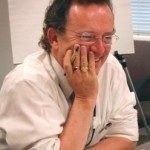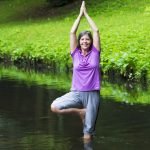Déjà Vu All Over Again: An Identity for the Profession
Education
David J. Schleich, PhD
Did you hear ’em talkin’ ’bout it on the radio
Did you try to read the writing on the wall
Did that voice inside you say I’ve heard it all before
It’s like Deja Vu all over again
(John Fogerty)
At a naturopathic conference in England this past summer, I joined in on a long conversation among doctors from a half-dozen countries in a British pub one evening about the future of naturopathic medicine. We sat around a tough, old table. Identity is the key, declared one doctor from Spain. For the longest time after Flexner’s report took root in the legislative and public policy terrain in North America, concentrating for decades on treating disease presentation rather than on treating the whole person, the naturopathic profession has had unique, anchoring descriptors which charted a different path. Recently, though, so-called “functional” and “integrative” medicine have been co-opting the holistic landscape long nurtured by the naturopathic profession. Integrative and functional medicine physicians often don’t acknowledge naturopathy as part of the model they are now promoting and monetizing. Integrative physicians talk routinely these days to patients about lifestyle choices as root cause. Functional medicine aficionados, in particular, employ a systems-oriented medical approach to help in understanding the underlying causes of a disease in an individual. The functional medicine sector seems to have adopted a more highly personalized angle on diagnosis and prognosis than the integrative medical professionals. Meanwhile, conventional biomedicine physicians consider this trend to be a form of devolution. Naturopathic physicians worry that it is a form of assimilation. When all is said and done, who will we be then, they ask.
The naturopaths at that rectangular Tudor trestle table, with its solid balustrades and timeworn clavos, concluded that we had best get our identity clear sooner rather than later. The functional and integrative medicine camps, so the conversation went, work toward gathering data principally about the biochemical individualty of their patients. Both approaches are personalizing at a fair clip – something the naturopathic profession might have been doing for a century but not broadly understood. We have our therapeutic order, our principles, and our track record, the assembled naturopaths concurred. We adopt biomedical techniques and theorems into our work as needed and consistent with our values. The rest we eschew. That is our identity, several declared. And when it comes to the goal of recovery, we give Nature her due in the end. In this connection, we have more in common with Whorton’s taxonomy of “the most prominent unconventional practitioners: homeopaths, hydropaths, eclectics, botanics, chrono-thermalists, clairvoyants, natural bone-setters, mesmerists, galvanic doctors, astrologic doctors, magnetic doctors, uriscopic doctors, blowpipe doctors” (Whorton, 2004, p.xii) than with the rapidly evolving, contemporary naturopathic physician in a landscape of integrative medicine.
What followed was much expounding that included the cosseting images and nostalgia for what the legendary British naturopath, C. Leslie Thompson, famously called a way of looking at life; a curiosity about life and a philosphy of living. But they are not enough, one naturopathic doctor asserted, to keep the roots of naturopathic medicine safe from assimilation and dilution and to brand ourselves in this age.
There were those at that table, increasingly cluttered with food and tankards, who felt that our naturopathic medical curricula is under siege. Our deans and professors have to prepare naturopathic doctors for a medley of milieux ranging from primary care through to public domain health-coaching. A question went up: How can we yearn for what James Whorton calls “therapeutic universalism” – grounded in the efforts of the early drugless therapists and, more recently, of holistic health movements – in such a climate?
The Emmetropia of Shifting a Paradigm
One prominent UK naturopath during the course of the conversation – and numerous rounds of stout and ale – expounded on emmetropia to explain the pressures of change and renewed identity in the profession. The human eye, he said, has a remarkable capacity to accurately focus light rays on the retina so that we can see things sharply: emmetropia. There exists no apparent emmetropia illuminating a pathway for easy solutions. He went on to talk about how there are lots of graduates in all of our countries who have lots of debt, lots of competition, and not enough confidence.
I was thinking that evening during our conversation about Bill Mitchell. Some months before he passed, Bill Mitchell told a group assembled in an urban green patch in Toronto that the naturopathic profession has always wondered about its identity. “Look at this dandy little Taraxacum,” he quipped, surveying the bunch of us to see if anyone caught his pun. “It doesn’t quibble about where it took root; it just gets on with exploding like the teeth of a lion for all it’s worth. We know who we are,” he said. “We are nature doctors. We use science and nature to do what we do.”
Then the doctors in the pub got talking about naturopathic research. Research as a dimension of the identity of the profession is essential in our strategy. We need a sustained commitment to systematically demarcate the theory and practice of naturopathic medical knowledge, an American naturopathic doctor insisted. In this era of “integrative and functional medicine,” having data to corroborate what we claim is part of the self-identifying. It has to be part of our brand.
Transformational research from the growing cohort of theorists, writers, clinicians, teachers, and writers these days is huge, several said, compared to the 1990s and before. Such an outpouring happened once in the past, in the early decades of the last century. In those years there appeared year after year an abundance of journals, articles, pamphlets, and books expounding on every nook and cranny of naturopathy. After Flexner and the proliferation of legislative and public policy blocking any medical systems not subscribing to the epistemology of biomedicine, the naturopathic profession lost its momentum and wobbled on a strategy of professional formation, including statements of identity. The whole table agreed that today there is a new flowering, manifesting in the outstanding work of writers, researchers, and teachers spreading awareness and understanding of the relevance and promise of naturopathic medicine. At the same time, these codifying efforts increasingly validate Naturopathic Medicine as a system, and help authenticate the regulated presence of naturopathic doctors all over the world.
Overall, the constantly transforming curricula, proliferating research projects, and expanding clinical service have made for momentum the likes of which we haven’t seen since the early days of Benedict Lust. A recurrent conversation centered on biomedical knowledge, which the allopathic professions have unilaterally appropriated as their own, but which increasingly includes a small but robust naturopathic presence. At a time when mind-body medicine has legs, the profession can proudly point to its track record of having asked for decades what place the non-material elements in health outcomes have in an epistemology of medicine? This dialogue is also part of our identity, the conversation went, and though it can often be largely theoretical despite its pragmatic manifestations, it is also knowledge and research conducted by naturopaths that is conjugated through all fields these days – human and veterinary medicine and odontology (to name a few) – as well as through fundamental biosciences including biochemistry, biology, chemistry, embryology, histology, genetics, pathology, microbiology, botanics, and so on. The historical record demonstrates that biomedicine was less concerned until recently about an epistemology of medicine being about the whole of human health (and the health of the planet). Biomedicine research has been more focused on the theory, knowledge, and research of medicine than on the actual practice of medicine, much less on its philosophical assumptions.
Even as 21st-century pharmaceutical companies continue to proliferate simple compounds (along with tolerated and often harmful side-effects), naturopathic doctors frequently report that their biomedicine counterparts still don’t systematically question the paradigm of their own medical model. An Australian naturopath reminded the table that biomedicine and pharmaceutical communities berated the work of Dr Frances Kelsey a generation ago, yet her insistence on exacting science to assure regulatory decision-making eventually led to the Kefauver-Harris amendments to the Federal Food, Drug, and Cosmetic Act. This event, a half-century after Flexner, indicates the undulating history of biomedicine’s own protestations about the embracing of science. To this day, allopathic declarations about evidenced-based medicine are the vanguard defense of a social policy and economic track record in conflict. Part of the identity of the naturopathic profession is that it has challenged allopathic professional dominance during a recurrent backdrop of biomedicine disasters of careless, immunomodulatory drug prescribing, the anguish of contemporary iatrogenesis, and the opioid epidemic. Research supports the biomedicine industry’s certainty that its privilege and practice should remain for all time the foundation of all medical application, diagnosis, and treatment, but there are others who do research too, and with increasing success. Our detractors are increasingly surprised not only by how much research we do, but by how much we know, and by how much they are coming to learn about what that they do not know about what we know. Try that sentence again. Their platform of science and research, dramatically co-opted a long time back, is not actually theirs to control and boast about. This is the stuff of our contemporary identity.
Baer (2001) reminds us that biomedicine is the heterodox version of a medical system which he labels as the “American dominative medical model.” Biomedicine is used to being socially, economically, and politically positioned for control in our time; however, those who consider the terrain of knowledge upon which any system is constructed are not immune from the social anthropologists, historians, and political scientists among us looking more closely at the durability of any one group’s assumptions. That a dominant group can be ascendant in one generation and in decline the next is not without precedent. The data, especially in the United States, which report unequivocally the failure of biomedicine to sustain a healthy society, are part of the reason why integrative and functional medicine marketing is expanding so rapidly. In this regard, there are numerous academic conversations – which we are now a part of, more than ever – which are all about the epistemology of naturopathic medicine (ie, what do we know, how do we know what we know, and from what perspectives are we forming conclusions about what we know?).
The Art & Science of Holistic Medicine
Relevant to our confidence about identity is the work of Richenda Power. Two decades ago she produced a remarkable compendium of definitions associated with the “art” and “science” of “holistic medicine” in her book, A Question of Knowledge (Power, 2000). The juxtaposition of these commentaries about the primacy of “science” in theories of knowledge attached to specific medical systems, separated by almost 20 years, is quite instructive for us as we contemplate an epistemology of naturopathic medicine. Whereas Wetzler (1984) challenged the unquestioned centrality of science in the study and practice of mainstream, western medicine, delighting naturopathic thinkers of that era who were attending to the literature of professional formation (eg, Gort, 1986; Boon, 1995, 1996), Power found “few statements that contained direct claims for holistic medicine being an art” (p.128), but rather discovered a much larger “representation” of material on the “science” of holistic medicine. She points out, though, that such material was invariably “used as powerful symbolic capital in political struggles between groups of health workers” (p.129).
Even with this debate in mind, and knowing that the mantra of EBM (evidence-based medicine) is all around them, naturopathic doctors know that their identity includes being focused on informed, well-researched primary prevention, ie, making people more resistant to infection and illness, and slowing the progress of a particular disease via education, good food, supplements, and mind/body alignment techniques such as meditation and stress reduction. The biomedicine doctor, integrative or functional descriptors notwithstanding – so the discussion went at our ancient table whose clavos held strong despite some pounding fists and a growing cornucopia of food and drink – tends to have a different beginning point with patients and fewer tools for long-term wellness.
The Centrality of Holism in Naturopathic Medicine
A key dimension of naturopathic identity is the principle value of the naturopathic profession, ie, a profound belief in holism. The reductionism of biomedicine has generated questions about the unassailable position of science in health design and delivery, and also in the education of doctors. Relevant here is the work of Wetzler (1984), and the earlier work of Leavell and Clark (1965) and Adler and Shuval (1978). Citing them, Carpenter (1997, p.43) notes that when discussing the education of professionals, medical students report feeling “subject to negative pressures concerning the scientific element in medical training” during their studies. As their training progresses, he explains, the very “centrality of science for medical practice” is of decreasing importance “for the competent physician.” He explains, though, that at the core of scientific medicine are techniques not anathema to naturopathic medicine, such as inspection, palpation, percussion, and auscultation. These too become part of the identity of the naturopathic doctor.
S/he routinely looks, touches, and listens more than the allopathic doctor. Each, though, has lab tests and instruments to do the work of physical and clinical diagnosis. Indeed, these similarities have been true from the days of Frederick Gates and William Osler, who anticipated a time when all medicine, natural or scientific, could be “reduced to an exact science” (Bliss, 1999). Osler was declaring late in the 19th century in his book, The Principles and Practice of Medicine (1892), that the rigor which he and others felt must accompany “scientific” medicine – including a protracted commitment to research – was frequently not present in such fields as naturopathy, homeopathy, and osteopathy. That was then.
Osler contended that “medicine must rest on science” (Bliss, 1999). As a clinical physician, Osler wanted a scientific underpinning to “working at the bedside,” which was focused on the “whole patient,” not unlike the naturopathic physician who is trained to develop a relationship with the patient that includes a comprehensive awareness of the person’s complete physical, spiritual, and mental makeup. Boon (1995, 1996), and Gort (1986) before her, have identified the contemporary manifestations of this tension between holistic and scientific practitioners, and indeed between holistic and scientific naturopathic practitioners. The holistic practitioner’s spiritual and physical words are “not separate, but manifestations of a single life force” (Boon, 1996). Consequently, symptoms, whether physical or spiritual, command the same attention. Their scientific counterparts, however, to iterate the epistemology, practice based on a biomedical model, which reduces all pathology to a cellular or molecular level. For the latter, the scientific method is the route to curing a disease. For the former, environment and spiritual balance are key factors in a treatment protocol. These characterize our identity.
As Schon reports (1987), though, despite the philosophical paradigm of any one group’s location in an orthodox or a heterodox medical system, “the greater one’s proximity to basic science, the higher one’s academic status” (p.55). Professional schools of medicine, in such a context and within such an epistemology, would strive to train healers and socialize them as biotechnical problem-solvers. Routinely, they would follow a sequence that immersed the student in medical science and then in supervised clinical practice. Glazer (1974) describes this approach as a “yearning for the rigor of science-based knowledge and the power of science-based technique.” This fascinating polarity hugely influenced the development of naturopathic medical education in North America. The existence of a distinct tension between professional orientation [itself not consistent across the profession and often regionally diverse] and student socialization has been discussed from a somewhat different perspective by Boon (1996) in her analysis of the scientific and holistic world views of both students and practitioners.
Gieryn’s (1983) discussion about the practical problem of constructing some kind of boundary between science and “varieties of non-science” is an important theoretical discussion about the claims to authority that science insists upon. Naturopathic physicians and their teachers seem attracted to such a source of authority, but define their eclectic professional therapies inside and outside such boundaries. There are even continuing claims that the profession has not embarked on rigorous research about key modality areas in its repertoire, such as individualized nutritional therapy (Vickers & Zollman, 1999) or chronic diseases, in general (Haynes, 1999). A persistent equivocation in the broader field of clinical practice and the continuing influence of practitioners on their educational institution’s priorities have influenced the development of the profession and those very educational institutions which prepare them for practice in a growing number of regulated states and provinces.
A Research Agenda: Emerging Identifier
The naturopathic profession’s enduring reputation for high-touch patient care, now coupled with a growing respect for the importance of research, is a cornerstone of a contemporary identity and can help us eschew assimilation. The biomedicine industry is taking notice. For example, a national consortium of medical research institutions, funded through a US-based organization called Clinical and Translational Science Awards (CTSAs), has goals which look very familiar to the naturopathic research community:
- Support a more inclusive medical research agenda
- Improve the way medical research is conducted across the country
- Reduce the time it takes for laboratory discoveries to become treatments for patients
- Engage communities in clinical research efforts
- Train the next generation of clinical and translational researchers
The biomedicine health industry – with its improperly labeled “non-profit” hospitals and appropriately labeled “for profit” suppliers in the United States – has an appalling track record and reputation for gouging prices and the margins of a well-oiled revenue monolith. Whether it’s because the Affordable Care Act (ACA) intends equal shelf-time for all providers, or that the new insurance exchanges are slowing the abuses of the reimbursement monopoly, Naturopathic Medicine is more visibly at the table in this debate about cost and effectiveness. Naturopathic researchers are known more widely now for their interest in advancing natural medicine in ways not aimed at monetizing every wiggle of health promotion. They grapple with the slow journey from “basic science” discovery through to “adoption.” Naturopathic researchers understand very well the dangers and the opportunities here.
Robert Duggan, cofounder of Tai Sofia, now the Maryland University of Integrative Health, captured the important reality of the institutional and professional duality that has contributed so profoundly to the challenge of professional formation for naturopathic medicine, but which quest of late is shifting inexorably as we try to say who we are. He wrote 25 years ago:
In Baltimore, Wolfe St. runs between two groups of buildings: The Johns Hopkins Medical School on one side of the street, representing the finest in medical skill and technology, and the Johns Hopkins School of Public Health on the other, symbolizing a humanistic, community-based approach to healthcare. When differences between the two schools were more pronounced than they are now, people joked that Wolfe Street was the widest in the world. Our culture needs a blend of what’s on both sides of that street. – (Duggan, 1995, p.241)
References:
Adler, I. & Shuval, J. T. (1978). Cross Pressures During Socialization for Medicine. American Sociological Review,43 (5), 693-704.
Baer, H. A. (2001). Biomedicine and Alternative Healing Systems in America: Issues of Class, Race, Ethnicity, & Gender.Madison, WI: University of Wisconsin Press.
Bliss, M. (1999). William Osler: A Life in Medicine. Toronto: University of Toronto Press.
Boon, H. (1995). The making of a naturopathic practitioner: the education of alternative practitioners. Health and Canadian Society,3 (1/2), 15-41.
Boon, H. (1996). CanadianNaturopathic Practitioners: The Effects of Holistic and Scientific World Views on Their Socialization Experiences and Practice Patterns.[PhD thesis]. University of Toronto.
Carpenter, P. (1997). The education of professionals. Education and Society,4 (1), 38-51.a.
Duggan, R. M. (1995). Complementary Medicine: Transforming Influence of Footnote to History? Alternative Therapies, 1 (2), 28-32.
Glazer, N. (1974). The Schools of the Minor Professions. Minerva, 12 (3), 346-363.
Gieryn, T. F. (1983). Boundary-Work and the Demarcation of Science from Non-science: Strains and Interests in Professional Ideologies of Scientists. American Sociological Review, 48 (6), 781-795.
Gort, E. (1986). A Social History of Naturopathy in Ontario: The Formation of an Occupation. [MSc thesis]. Division of Community Health, University of Toronto.
Haynes, R. B. (1999). Commentary: a warning to complementary practitioners: get empirical or else. BMJ,319 (7225), 1632.
Leavell, H. R. & Clark, E. G. (1965). Preventive Medicine for the Doctor in His Community.New York, NY: McGraw-Hill.
Osler, W. (1885). The growth of a profession. Canada Medical & Surgical Journal,14, 129-155.
Osler, W. (1893, c.1892). The Principles and Practice of Medicine.New York, NY: D. Appleton and Co.
Power, R. (2000). A Question of Knowledge. New York, NY: Routledge.
Schon, D. (1987). Educating the Reflective Practitioner. San Francisco, CA: Jossey-Bass Publishers.
Vickers, A. & Zollman, C. (1999). Unconventional approaches to nutritional medicine. BMJ,319 (7222), 1419.
Wetzler, M. (1984). Holistic aspects to medical training. British Journal of Holistic Medicine,April, pp. 55-62.
Whorton, J. (2004). Nature Cures: The History of Alternative Medicine in America. New York, NY: Oxford University Press: pp xii.
 David J. Schleich, PhD, is President Emeritus of the National University of Natural Medicine (NUNM), where he served from 2007 to 2019; former president of Truestar Health; and former CEO and president of CCNM (1996 to 2003). Previous posts have included appointments as vice president academic of Niagara College, and administrative and teaching positions at St Lawrence College, Swinburne University (Australia) and the University of Alberta. His academic credentials have been earned from the University of Western Ontario (BA), the University of Alberta (MA), Queen’s University (BEd), and the University of Toronto (PhD).
David J. Schleich, PhD, is President Emeritus of the National University of Natural Medicine (NUNM), where he served from 2007 to 2019; former president of Truestar Health; and former CEO and president of CCNM (1996 to 2003). Previous posts have included appointments as vice president academic of Niagara College, and administrative and teaching positions at St Lawrence College, Swinburne University (Australia) and the University of Alberta. His academic credentials have been earned from the University of Western Ontario (BA), the University of Alberta (MA), Queen’s University (BEd), and the University of Toronto (PhD).
 David J. Schleich, PhD, is President Emeritus of the National University of Natural Medicine (NUNM), where he served from 2007 to 2019; former president of Truestar Health; and former CEO and president of CCNM (1996 to 2003). Previous posts have included appointments as vice president academic of Niagara College, and administrative and teaching positions at St Lawrence College, Swinburne University (Australia) and the University of Alberta. His academic credentials have been earned from the University of Western Ontario (BA), the University of Alberta (MA), Queen’s University (BEd), and the University of Toronto (PhD).
David J. Schleich, PhD, is President Emeritus of the National University of Natural Medicine (NUNM), where he served from 2007 to 2019; former president of Truestar Health; and former CEO and president of CCNM (1996 to 2003). Previous posts have included appointments as vice president academic of Niagara College, and administrative and teaching positions at St Lawrence College, Swinburne University (Australia) and the University of Alberta. His academic credentials have been earned from the University of Western Ontario (BA), the University of Alberta (MA), Queen’s University (BEd), and the University of Toronto (PhD).









